
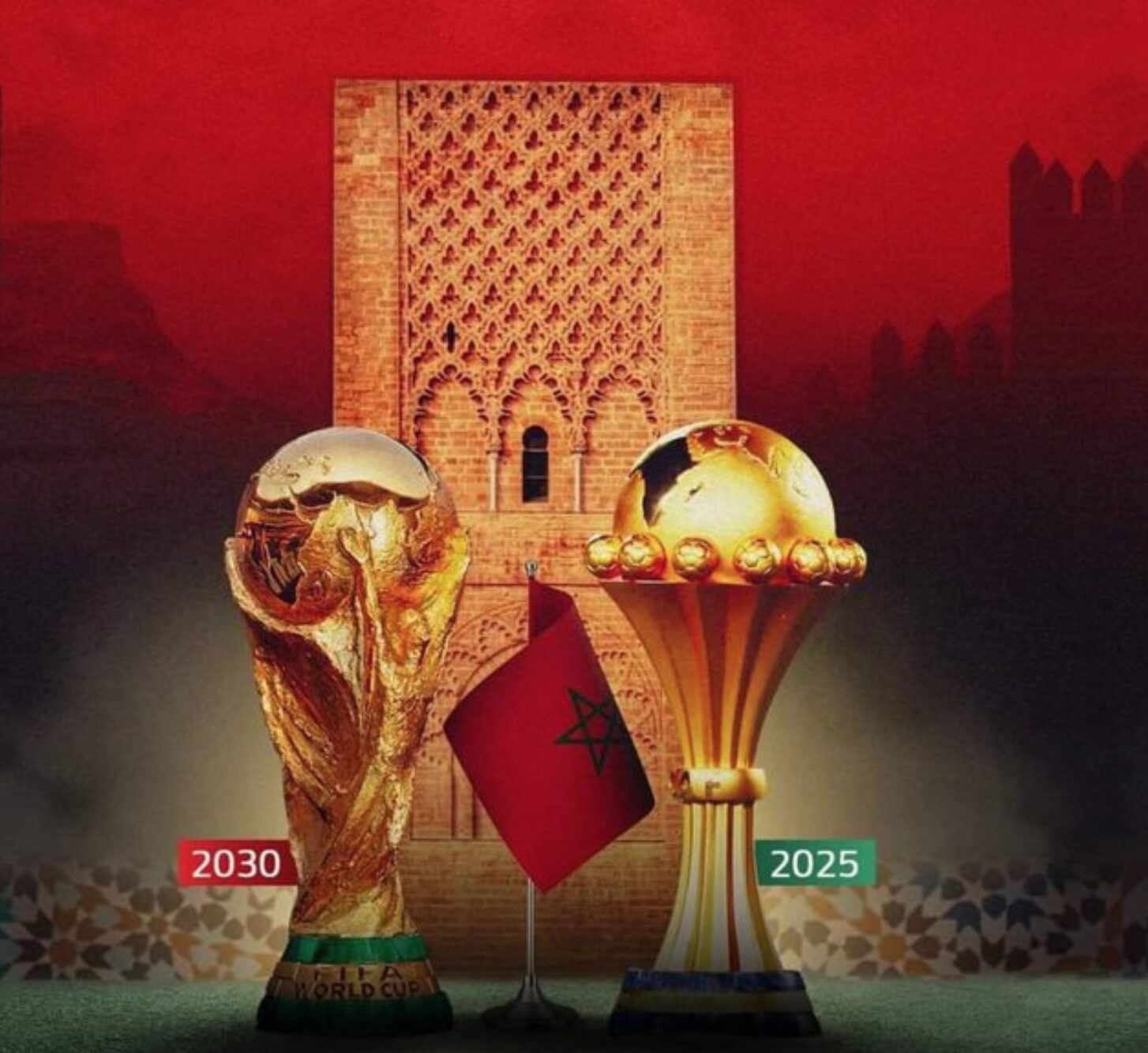
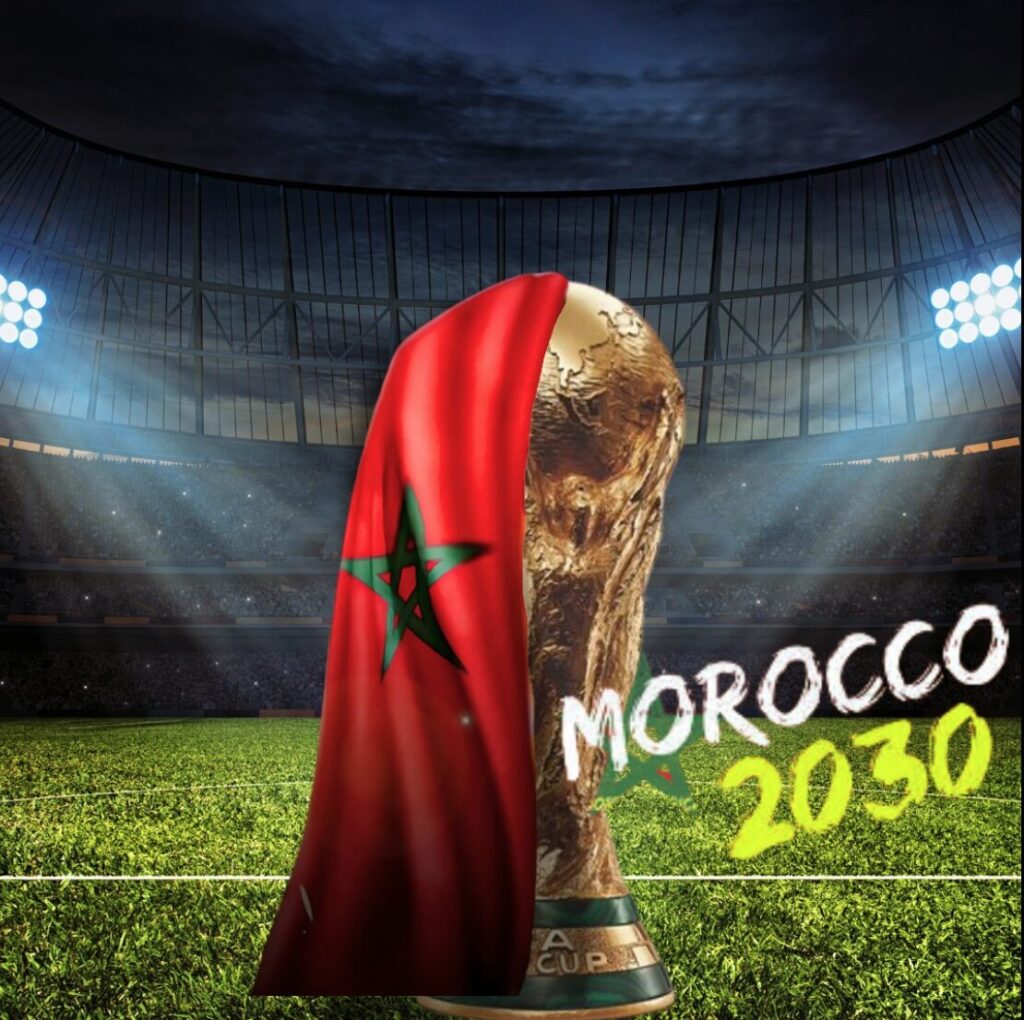
Introduction: A Nation Ready to Welcome the World
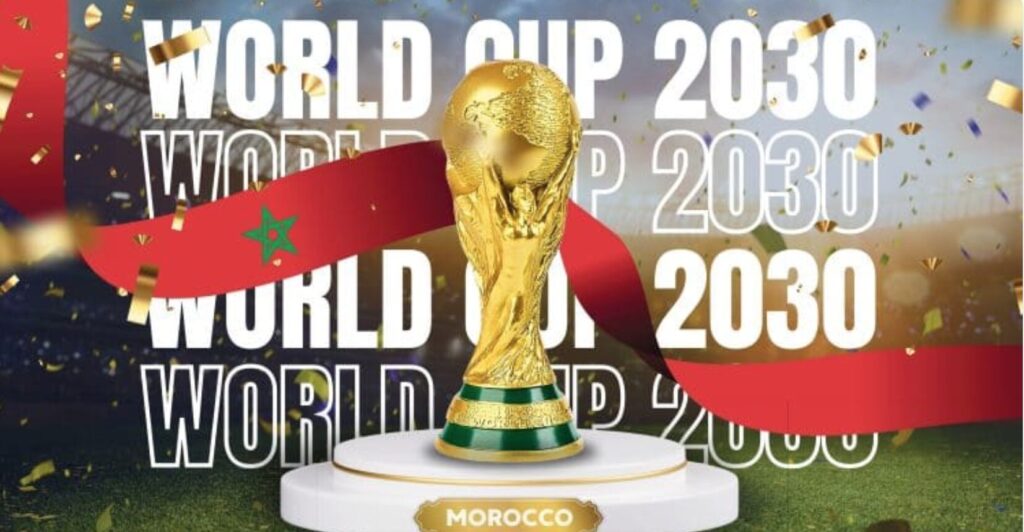
As the world looks toward the horizon of 2030, one destination shines brighter than ever — Morocco. With its breathtaking landscapes, timeless traditions, and growing global presence, Morocco 2030: The World Awaits! isn’t just a slogan — it’s a promise of transformation, unity, and pride.
Whether for football, cultural exploration, or adventure, Morocco is preparing to host the world in an event that will forever mark its history. The country is not only showcasing its stadiums and infrastructure but also its warmth, hospitality, and rich cultural identity that have captivated travelers for centuries.
Section 1 – Morocco 2030: A Vision Beyond Borders
The year 2030 represents a defining chapter in Morocco’s story — a moment when heritage and modernity come together on the world stage. Morocco’s successful bid to co-host the 2030 FIFA World Cup alongside Spain and Portugal marks a milestone achievement, positioning it as a bridge between Africa and Europe.
From the buzzing streets of Casablanca to the spiritual calm of Fez, the nation’s diverse cities will be ready to welcome millions of visitors. Morocco’s preparations reflect more than just sports enthusiasm — they mirror a deep commitment to progress, sustainability, and inclusivity.
This global event will not only transform stadiums but also inspire new airports, highways, eco-projects, and tourism hubs, enhancing Morocco’s reputation as one of the most dynamic destinations in the world.
Section 2 – Must-See Cities and Experiences Before 2030
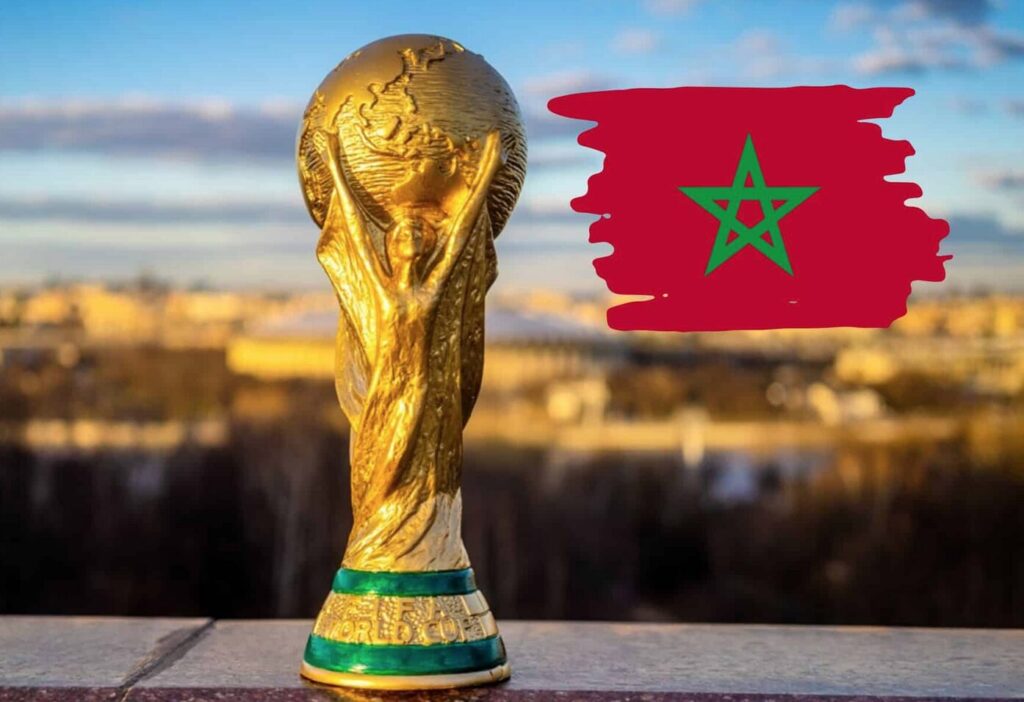
Before the world gathers here, now is the perfect time to discover Morocco’s magic firsthand. Each city offers its own rhythm, taste, and story.
Rabat: Where Tradition Meets Vision
As the capital, Rabat stands out for its clean streets, seaside breeze, and cultural harmony. From the Hassan Tower to the Mausoleum of Mohammed V, the city blends heritage with modern elegance. The Prince Moulay Abdellah Stadium will play a central role in Morocco 2030 — an architectural symbol of the country’s sporting spirit.
Marrakech: The Beating Heart of Morocco
Vibrant, colorful, and full of life, Marrakech captures the essence of Morocco’s charm. Wander through the Jemaa el-Fnaa square, explore the ancient Medina, and experience world-class hotels and riads. It’s a city that balances luxury with authenticity — a must-see for any traveler before 2030.
Tangier: The Gateway Between Worlds
Overlooking the Strait of Gibraltar, Tangier offers a fusion of Mediterranean freshness and African soul. Its modern port, stunning Corniche, and dynamic art scene are helping shape Morocco’s international image — ready to welcome travelers from across continents.
Agadir and Fez: Cultural and Coastal Gems
Agadir, known for its golden beaches and surf-friendly waves, will charm fans seeking relaxation. Meanwhile, Fez, the spiritual and intellectual heart of Morocco, invites visitors to step into history through its ancient medina — one of the largest and oldest in the world.
Section 3 – Travel Tips and Cultural Insights for Morocco 2030
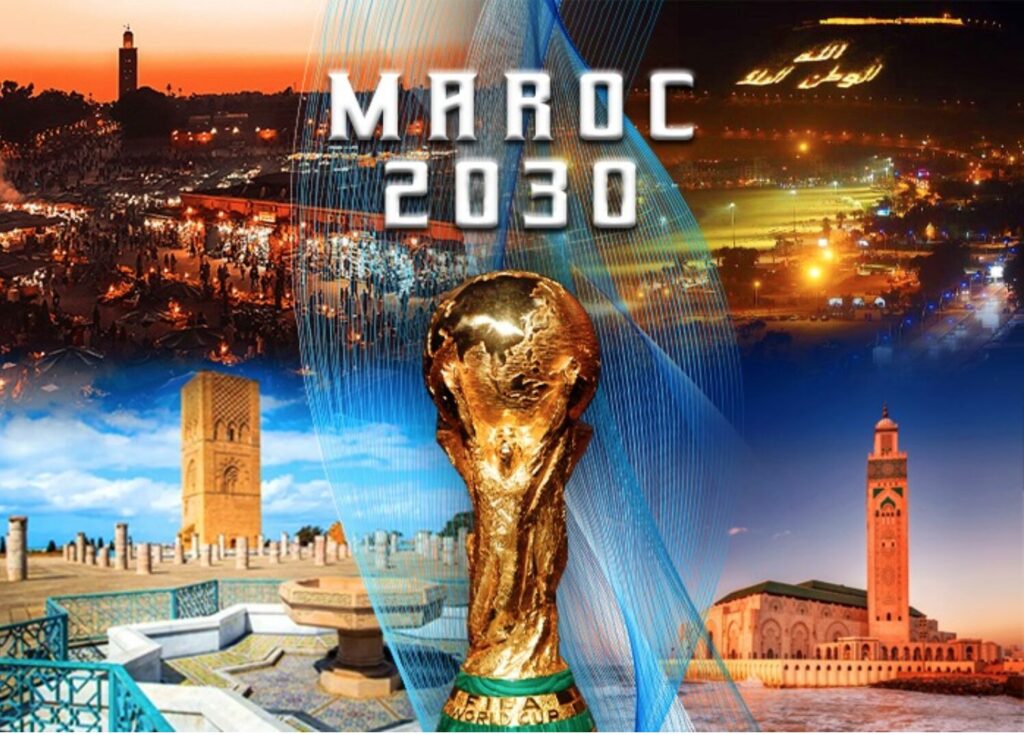
1. Timing Your Visit
Morocco is a year-round destination, but the 2030 event will attract massive crowds. Booking early — especially in cities like Marrakech and Rabat — is essential. Visit in spring (March–May) or autumn (September–November) for ideal weather and fewer crowds.
2. Language and Communication
Arabic and Amazigh are the official languages, but French and English are widely spoken in hotels and tourist areas. A friendly “Salam Alaikum” or “Merci” always goes a long way!
3. Local Etiquette and Respect
Moroccans are known for their hospitality. Always greet with a smile, remove shoes when entering homes, and dress modestly in traditional neighborhoods.
4. Transportation and Connectivity
High-speed trains now connect major cities like Casablanca, Rabat, and Tangier. New highways and airports are under development for 2030, ensuring smooth travel across the country.
5. Food and Flavors to Try
Taste the soul of Morocco through dishes like tagine, couscous, and pastilla. Don’t forget to sip a cup of mint tea — a symbol of friendship and welcome.
Section 4 – Real-World Stories: The Moroccan Spirit of Hosting
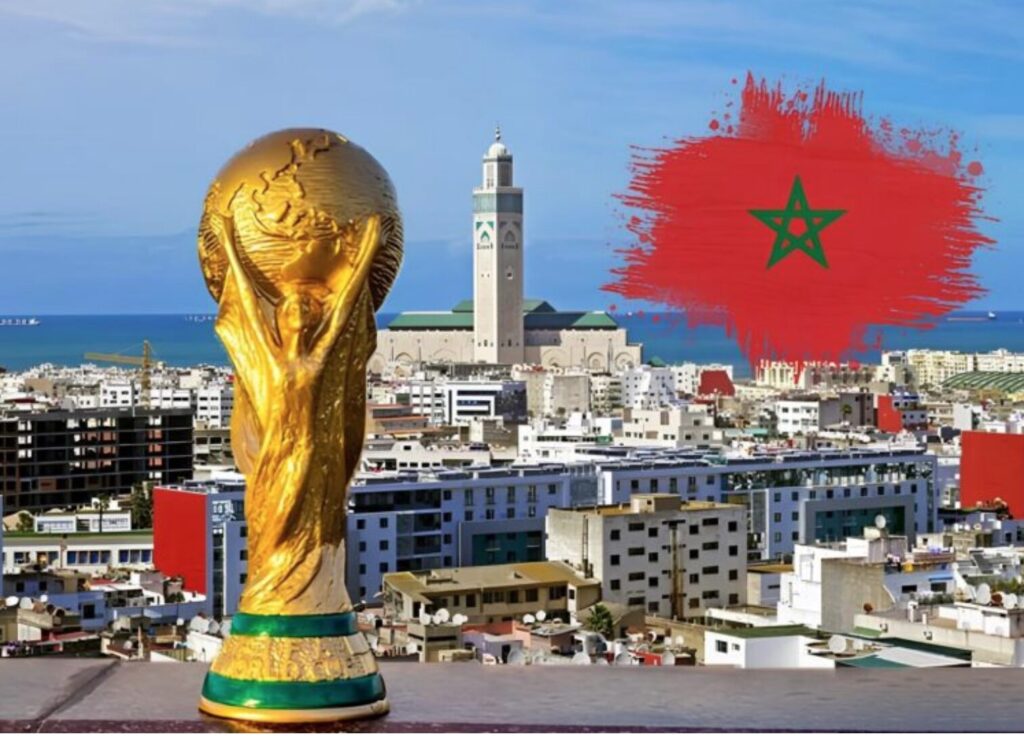
Morocco’s reputation as a warm, generous host has already been proven through decades of international festivals and sporting events. From the FIFA Club World Cup to the African Cup of Nations, Moroccan cities have welcomed athletes and fans with unmatched enthusiasm.
Travelers often describe Morocco not just as a place to visit, but as a place to feel — where every conversation, every cup of tea, and every smile builds connection. Visitors from around the world share stories of Moroccan kindness — a taxi driver who becomes a guide, a market vendor who offers tea, or a family who insists you join their meal.
As one traveler from Spain shared:
“In Morocco, I didn’t feel like a tourist — I felt like a guest. The country’s heart beats for everyone.”
This spirit will define Morocco 2030 — an event that celebrates football but also unity, culture, and humanity.
Section 5 – Looking Ahead: Morocco’s Bright Future
With its ambitious infrastructure projects, growing tourism economy, and commitment to sustainability, Morocco is paving the way for a new era of travel. The government is investing heavily in eco-friendly transport, renewable energy, and digital innovation to make 2030 a global success.
The Morocco 2030 vision goes beyond sports — it’s about showcasing a modern Africa that welcomes the world with open arms. Expect new resorts, green cities, upgraded stadiums, and unforgettable experiences.
Whether you’re a football fan, adventurer, or culture seeker, Morocco 2030 invites you to be part of something historic — a celebration of people, passion, and progress.
FAQ – Morocco 2030: What Travelers Need to Know
1. What is Morocco 2030 about?
Morocco 2030 refers to the year when Morocco will co-host the FIFA World Cup with Spain and Portugal — an event that symbolizes unity between continents.
2. Which Moroccan cities will host matches?
Cities like Rabat, Casablanca, Marrakech, Agadir, Tangier, and Fez are expected to host key matches, welcoming fans from around the globe.
3. Do travelers need a visa to visit Morocco for 2030?
Many nationalities can enter visa-free for short stays. However, check Morocco’s official visa website before planning your trip.
4. What can visitors expect in terms of infrastructure and travel?
By 2030, Morocco will feature upgraded airports, highways, stadiums, and public transport — making travel fast, safe, and comfortable.
5. Why should I visit Morocco before 2030?
Visiting before the big event lets you enjoy its beauty, culture, and calm before the crowds arrive. Plus, you’ll witness its transformation up close!
Conclusion: The Countdown Begins
As the countdown to Morocco 2030 continues, excitement grows — not just for football fans, but for travelers seeking something deeper. Morocco’s fusion of tradition and innovation makes it a destination where every visitor becomes part of the story.
So whether you’re planning your first trip or returning to relive the magic, one thing is certain: Morocco 2030 — the world awaits, and so does your next unforgettable adventure.




